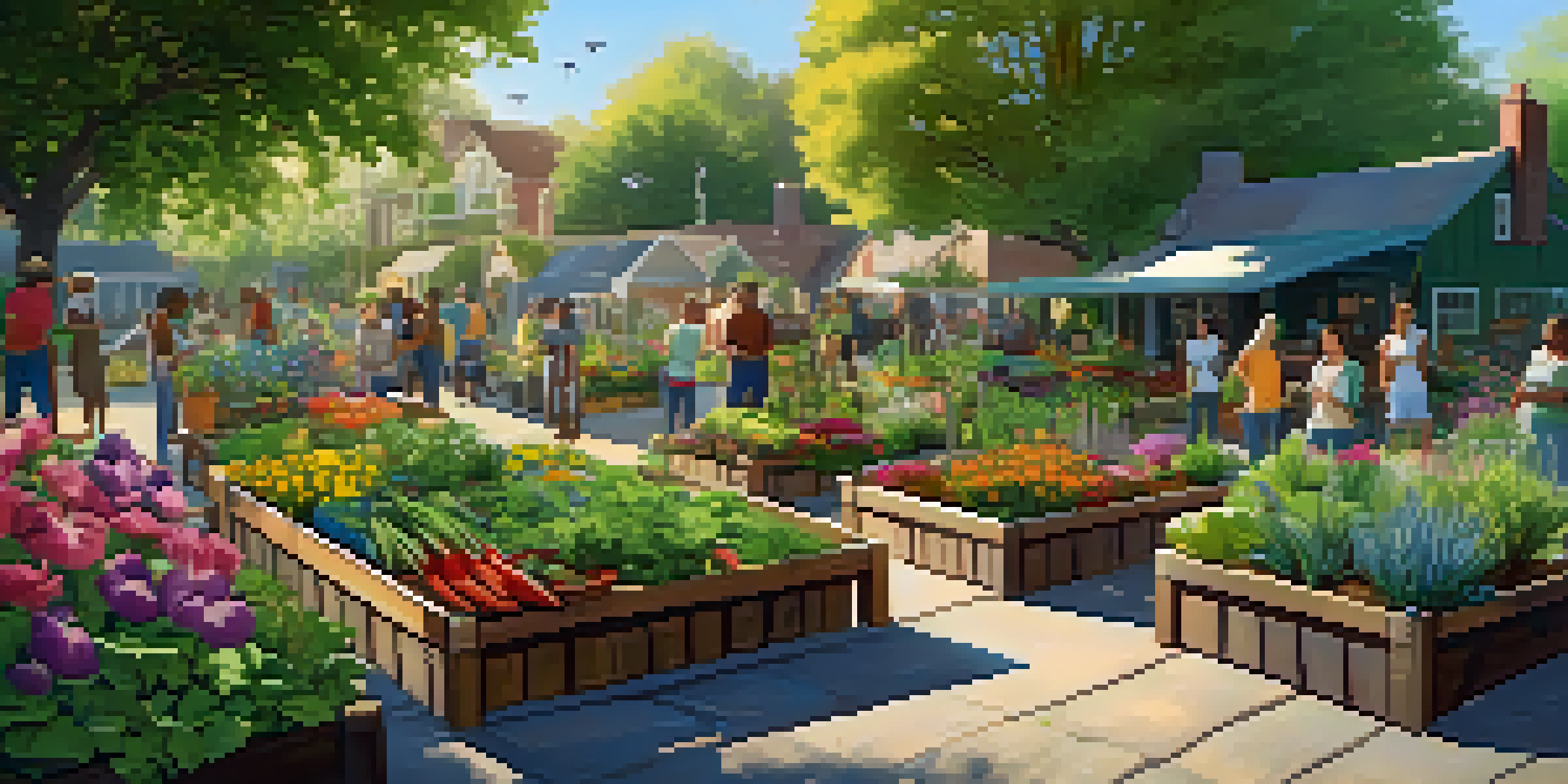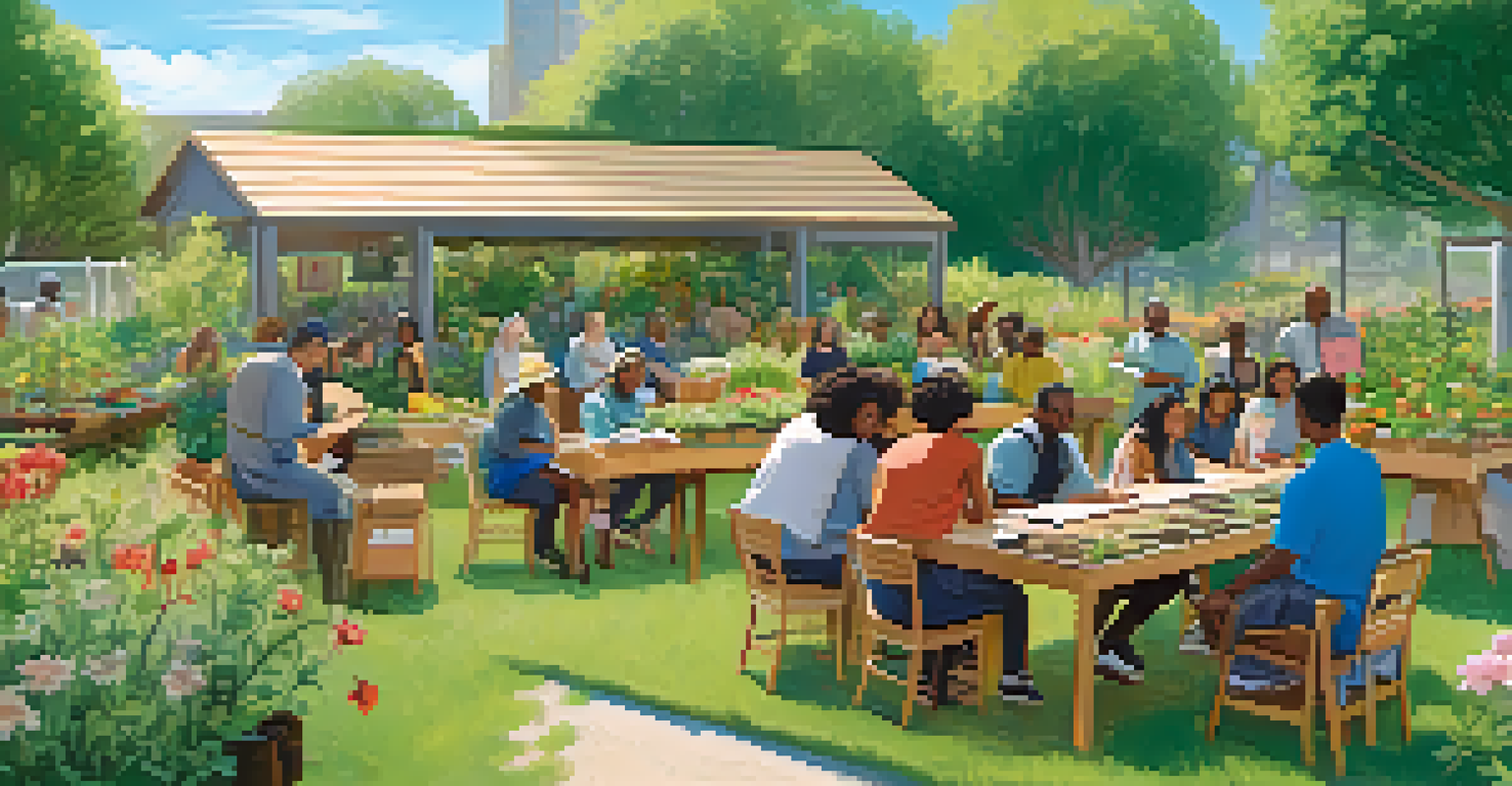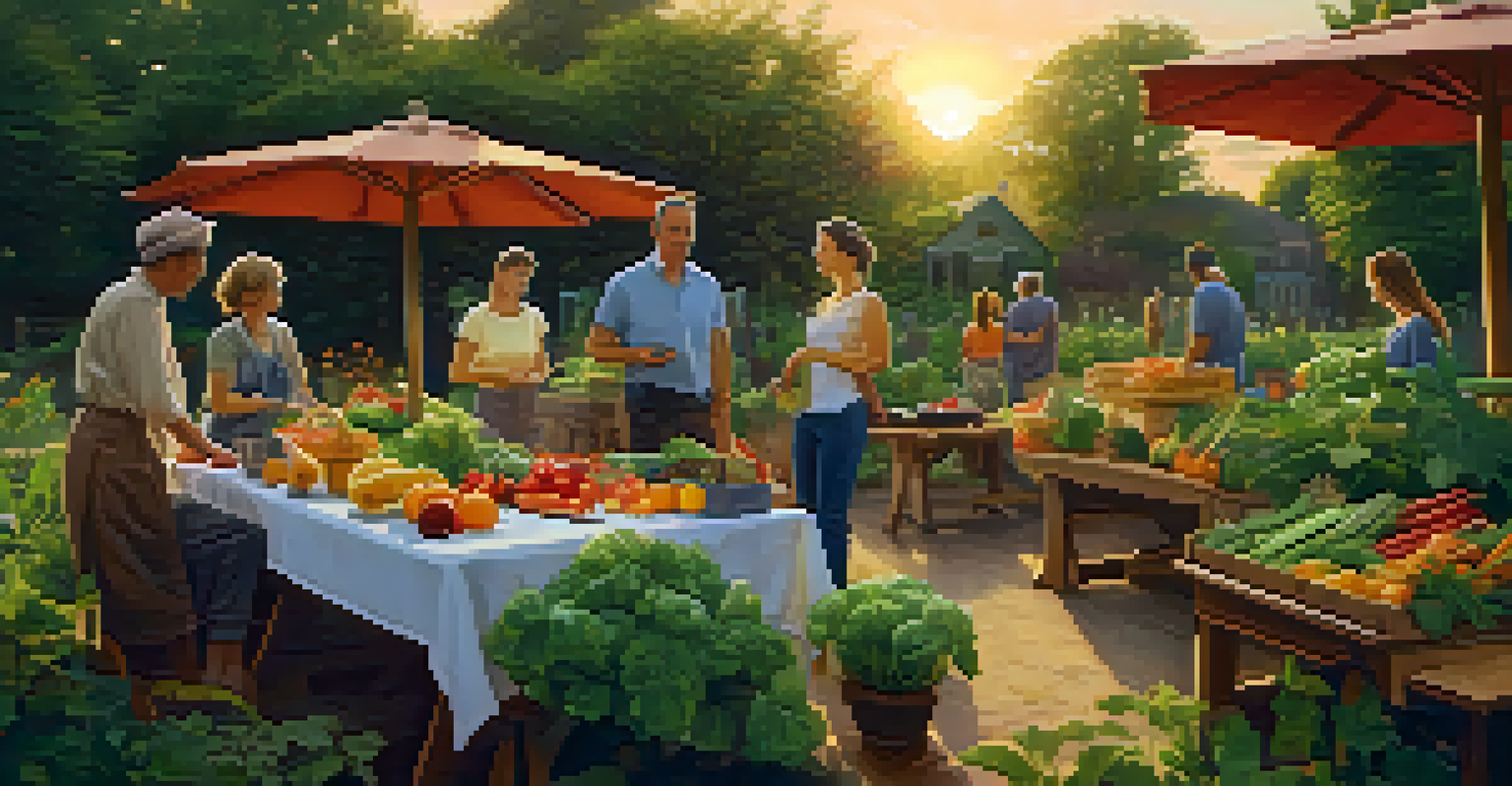Community Gardens: A Catalyst for Environmental and Health Change

Understanding Community Gardens and Their Purpose
Community gardens are shared spaces where individuals come together to cultivate plants, primarily vegetables and flowers. These gardens serve as a platform for local residents to engage with each other, fostering a sense of community and belonging. They not only provide fresh produce but also enhance the local environment, making neighborhoods more vibrant and green.
Community gardens make room for people to grow together, not just plants.
In essence, community gardens are about more than just growing food; they are about growing connections. Participants often find joy in collaborating, sharing gardening tips, and exchanging recipes, all while enjoying the therapeutic benefits of working with nature. This social aspect is crucial, particularly in urban settings where green space can be limited.
Moreover, these gardens can also play a pivotal role in educating the community about sustainable practices. Workshops on composting, organic gardening, and biodiversity can empower individuals to make environmentally friendly choices, contributing to a healthier planet.
Health Benefits of Participating in Community Gardens
Engaging in community gardening offers a multitude of health benefits, both physical and mental. Research shows that individuals who participate in gardening often consume more fruits and vegetables, leading to improved nutrition. The act of gardening itself is also a form of physical exercise, which can help reduce the risk of chronic diseases.

Beyond the physical benefits, gardening is known to promote mental well-being. Spending time in nature has been shown to reduce stress, anxiety, and depression. The simple act of nurturing plants can be incredibly therapeutic, providing a sense of purpose and accomplishment.
Community Gardens Foster Connection
These shared spaces encourage residents to build relationships and collaborate through gardening.
Additionally, the social interactions fostered in community gardens can combat loneliness and isolation, particularly among older adults. These spaces create a supportive environment where friendships can blossom, enriching the lives of participants.
Community Gardens as Environmental Stewards
Community gardens contribute significantly to environmental sustainability by promoting biodiversity. They provide habitats for various species, including pollinators like bees and butterflies, which are crucial for our ecosystem. By nurturing a variety of plants, these gardens help maintain ecological balance.
Gardening adds years to your life and life to your years.
Furthermore, community gardens can improve air quality and reduce urban heat. Plants absorb carbon dioxide and release oxygen, making neighborhoods healthier places to live. The greenery also helps cool the surrounding area, mitigating the heat island effect often seen in cities.
In addition to these benefits, community gardens encourage composting and recycling practices. Participants learn the importance of reducing waste and can create nutrient-rich soil from discarded kitchen scraps, thus closing the loop on food waste and enriching the earth.
Fostering Community Relationships Through Gardening
One of the most beautiful aspects of community gardens is the relationships they cultivate among residents. These shared spaces break down barriers, allowing people from diverse backgrounds to come together over a common interest: growing food. This collaboration fosters a sense of trust and camaraderie that can extend beyond the garden.
Moreover, community gardens can serve as a platform for local events, workshops, and social gatherings. These activities create opportunities for neighbors to connect, share stories, and learn from one another. They become a hub of cultural exchange, enriching the community's social fabric.
Health Benefits of Gardening
Participating in community gardens promotes better nutrition and enhances mental well-being.
As relationships deepen, community members often become more invested in each other's lives and well-being. This interconnectedness can lead to increased advocacy for local issues, as residents work together to improve their shared environment.
The Role of Local Governments in Supporting Gardens
Local governments play a crucial role in the success of community gardens. By providing land access, funding, and resources, they can help establish and maintain these green spaces. Some cities have even implemented policies that prioritize the development of community gardens as part of urban planning.
In addition to land, local governments can support community gardening through educational programs and grants. These initiatives can provide the necessary tools and knowledge for residents to successfully cultivate their gardens and understand sustainable practices.
Moreover, by investing in community gardens, local governments can enhance community engagement and pride. When residents see their government taking an active role in promoting health and the environment, it fosters a sense of collaboration and shared responsibility.
Challenges Facing Community Gardens Today
While community gardens offer numerous benefits, they also face several challenges. One of the most significant hurdles is securing land access, particularly in urban areas where space is at a premium. Community members often have to navigate complex regulations and zoning laws to establish their gardens.
Additionally, funding can be a barrier for many community gardening initiatives. Without financial support, it can be difficult to maintain gardens, purchase necessary supplies, or expand programs. Many gardens rely on volunteer efforts, which can lead to burnout if not managed properly.
Local Governments Support Gardens
Government involvement is crucial for providing resources and fostering community engagement in gardening initiatives.
Finally, community gardens must address issues of inclusivity. Ensuring that all community members feel welcome and can participate is essential for fostering a truly diverse and thriving garden. This may require outreach efforts and programs that cater to various demographics within the community.
How to Get Involved in Community Gardening
Getting involved in community gardening is easier than you might think! Start by researching local gardens in your area; many have websites or social media pages where you can learn about their programs and volunteer opportunities. If there isn’t a garden near you, consider starting one with your neighbors.
Joining a community garden often involves a small fee, which helps with maintenance costs. Once you’re in, you can participate in planting, weeding, and harvesting, or simply enjoy the space. Many gardens also host workshops and events, providing excellent opportunities to learn and meet new people.

Remember, even if you’re new to gardening, you don’t need to be an expert. Community gardens are all about learning together and sharing knowledge. So, roll up your sleeves, dig in, and enjoy the rewarding experience of growing food and friendships!